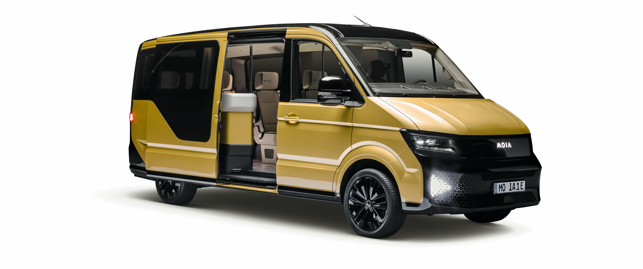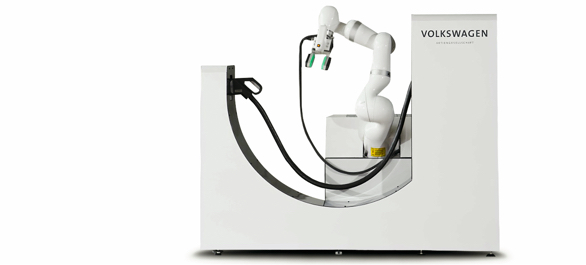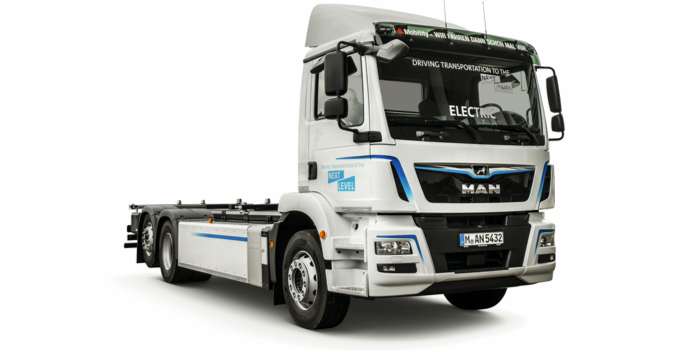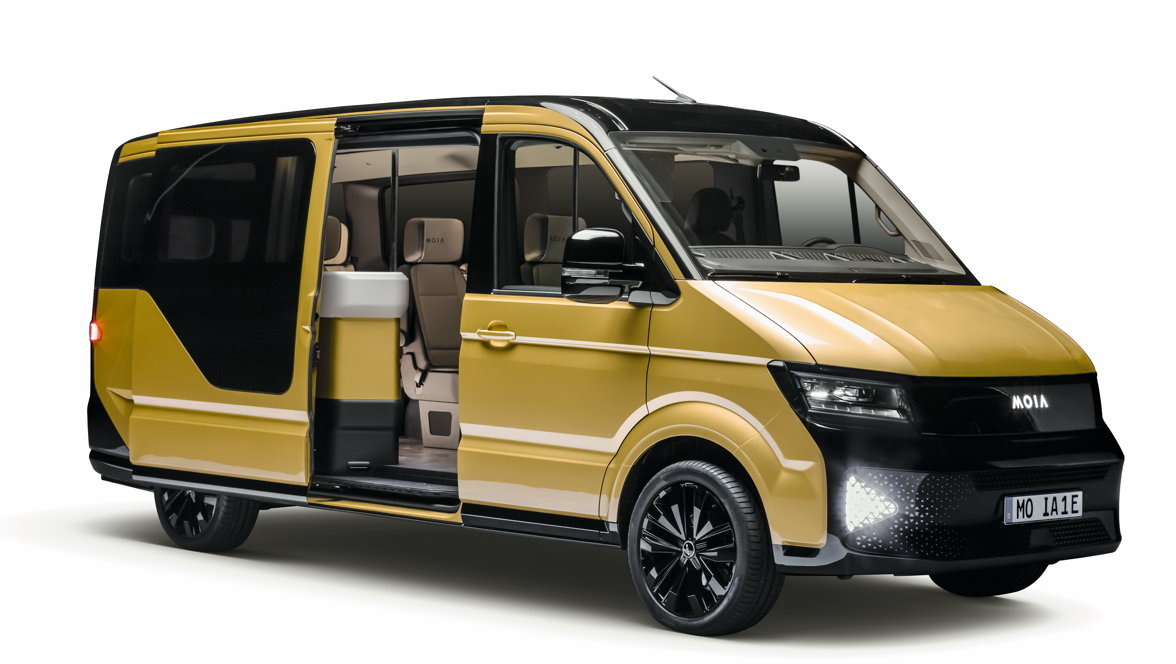The Volkswagen Group is gathering speed as it heads towards the age of e-mobility. What can we expect? Here are seven recent milestones.
Anyone who has already sat in an e-Golf1 or e-up!2, an A3 e-tron3 or Passat GTE⁴ and experienced the acceleration, the silent ride, and the ease of use will happily confirm that e-mobility really is quite something – and it’s happening right now. The transition from internal combustion engines to electric powertrains is often talked about as if it were an abstract principle, a topic for forecasts and visions. For Volkswagen Group brands and their customers, though, electric drives have been the real thing for quite some time now. Go electric? Let’s go!
50 billion and more is the sum the Group will be investing in battery cell procurement over the coming years.
Several all-electric cars and plug-in hybrids are already on sale, and many more developments are in the pipeline. CEO Matthias Müller presented “Roadmap E,” the most comprehensive electrification initiative in the global automotive industry, in fall of 2017. By 2030 at the latest, Volkswagen Group brands will be offering at least one all-electric or hybrid version of their entire portfolio, comprising some 300 different models. Setting itself such a deadline is an unusual step in the automotive industry – and above all one that testifies to just how seriously the Group is taking e-mobility. “We are reinventing the car,” Matthias Müller says. “To achieve this, we are making targeted investments to provide the necessary funds from our own resources.”
The Volkswagen brand, for example, is currently developing the Modular Electrification Toolkit (MEB). This is a vehicle architecture optimized for e-mobility, which will serve as the basis for all future electric vehicles in the volume segment. Audi and Porsche are collaborating on the Premium Platform Electric (PPE) for the premium segment. In addition, the Group is researching battery potentials, getting production ready for manufacturing electric vehicles – and taking responsibility for the customer experience in charging and the charging infrastructure. One goal of the IONITY joint venture, launched in cooperation with other automotive manufacturers, in November 2017 is to expand the vitally important network of fast charging stations along major routes across Europe.
But what does all this mean for the immediate future? What concrete ideas and models from the Group and its brands are already driving Roadmap E forward? Here are seven current examples.

1. MOIA ride pooling
The project: The first vehicle from MOIA, Volkswagen AG’s new mobility services company, is a fully-electric six-seater. It is part of a comprehensive ecosystem for ride pooling to be rolled out in Hamburg at the end of 2018. Like taxi sharing, rides can be booked via an app. An algorithm groups together passengers with similar destinations.
The mission: Clever e-concepts make urban transport cleaner and more relaxed.

2. Volkswagen I.D. family
The project: It all began in 2016 with the all-electric I.D. concept car for the compact class (left). This was followed by the I.D. BUZZ electric van (center) and the I.D. CROZZ electric SUV (right). The trio was then showcased as a model family at the Los Angeles Auto Show in winter 2017. The family is designed for a range of between 500 (I.D. CROZZ) and 600 kilometers (I.D., I.D. BUZZ). The first model in this family, the compact-class I.D., is scheduled to go into production at the Zwickau plant in Saxony, Germany, at the end of 2019.
The mission: Volume models like the Golf or Bulli have cult status – the electric chapter of the Volkswagen legend begins now.

3. Porsche Mission E
The project: Fans caught a glimpse of the first test mule at the Nürburgring in October 2017. The all-electric four-door sports sedan (shown here as a concept study) offers the driving pleasure and dynamics that have made Porsche a legendary brand. The Mission E is designed for a driving range of 500 kilometers. It is expected to go into production late 2019 at the brand’s main plant in Zuffenhausen, which is being expanded specifically for the purpose.
The mission: This model from Porsche underscores just how sporty, fast, and luxuriously stylish e-mobility can be.

4. e-smartConnect quick-charging station
The project: One of the most frequently expressed reservations about e-mobility is the risk of not being able to find a charging station – or only finding the wrong kind – while traveling. Group Research is currently developing e-smartConnect, an automated e-filling station, in order to provide an optimal service in the future. The connector and the vehicle are linked via a special cable arrangement and the use of a lightweight robot. Research on mobile charging robots is also underway.
The mission: Volkswagen is working on innovative projects that address the critical issues associated with the charging infrastructure.

5. MAN eTGM
The project: Silent and emission-free distribution transport will revolutionize logistics. MAN has debuted the eTGM, a fully electric truck, with practical trials starting in 2018. Other key e-projects from Volkswagen Truck & Bus include the e-Delivery electric distribution truck from Volkswagen Caminhões e Ônibus, electric city buses from MAN and Scania, the Electric Road Truck from Scania, and the e-Crafter from Volkswagen Commercial Vehicles.
The mission: Electrification opens up new opportunities for freight transport – and the Volkswagen Truck & Bus brands have the solutions.
80 new electric and plug-in hybrid models
from the Group will be on sale by 2025.

6. Audi Brussels plant
The project: The Audi e-tron, the brand’s first all-electric SUV model (shown here as a concept study) is to be produced at the Audi plant in Brussels, Belgium, from 2018. Work began in 2016 to transform the present factory, which has been producing the A1 family since 2010, into a model facility for the carbon-neutral production of electric vehicles. A1 output will be shifted to Martorell in Spain.
The mission: As e-mobility gathers momentum, Audi is investing wisely in innovative production technology.

7. ŠKODA VISION E
The project: The VISION E concept car from ŠKODA is a fully electric SUV coupe. The brand’s emotionally designed first electric model has a range of 500 kilometers and also meets the Level 3 requirements for autonomous driving (Conditional Automation – the system monitors its performance limits and transfers to the driver when these limits are reached). A production version is in the pipeline for 2020.
The mission: SUVs are a great favorite with customers, and ŠKODA is proving that elegant and efficient electric versions are possible.
1 Volkswagen e-Golf: power consumption in kWh/100 km: combined 12.7; CO₂ emissions combined in g/km: 0; efficiency class: A+
2 Volkswagen e-up!: power consumption in kWh/100 km: combined 11.7; CO₂ emissions combined in g/km: 0; efficiency class: A+
3 Audi A3 e-tron: fuel consumption, l/100 km: combined 1.8 - 1.6 (petrol); Power consumption in kWh/100 km: combined 12.0 to 11.4; CO₂ emissions combined in g/km: 40 to 36; efficiency class: A+
4 Volkswagen Passat GTE: fuel consumption, l/100 km: combined 1.8 to 1.7; power consumption in kWh/100 km: combined 13.9 to 13.4; CO₂ emissions combined in g/km: 40 to 38; efficiency class: A+
